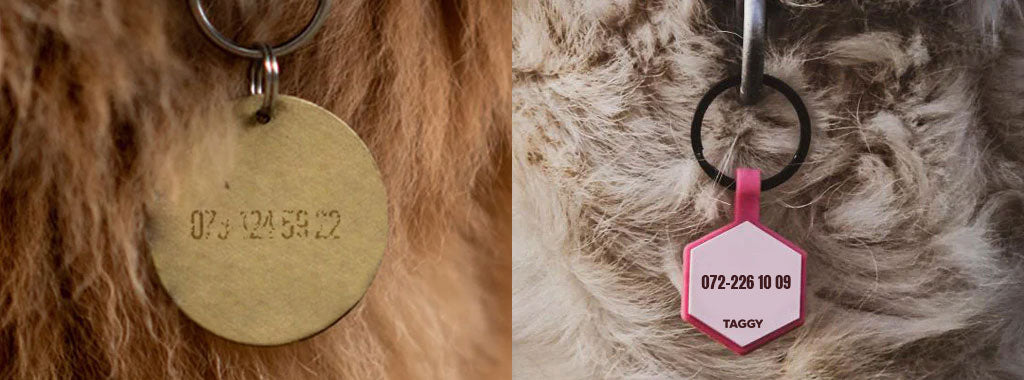
How often should you replace your dog's name tag? Tips for long-term use
Share
A dog tag is an important safety measure for your dog and one of the easiest ways to ensure your four-legged friend can always be identified if they run away. But like any other accessory, dog tags have a limited lifespan. In this article, we’ll go over how often you should replace your dog’s dog tag, and why silicone tags may be the best option for long-term use.
Signs that it's time to replace your name tag
How often you should replace your dog's name tag depends on several factors, including the material, how active your dog is, and the environment you live in. Here are some common signs that it may be time to replace the tag:
Worn text: If the text on your dog tag starts to become difficult to read due to wear or fading, it's time to replace it. A dog tag with illegible text loses its function and can pose a safety risk if your dog runs away.
Damage to the tray: Cracks, bent edges, or other physical damage can render the name tag ineffective. If the tag has damage that could cause it to break or come loose, it should be replaced immediately.
Changes in contact information: If you have recently changed your phone number, address, or other important contact information, it is important to update your name tag as soon as possible to ensure it always contains current information.
Rust or oxidation: For metal tags, rust or oxidation can be a problem, especially if your dog is often in damp environments. Rust can not only make the tag difficult to read but also weaken it, increasing the risk of it breaking.
The material's impact on durability
The material you choose for your name tag has a big impact on how long it will last. Here are some of the most common materials and their durability:
Stainless steel: Very durable and resistant to rust, but the text may wear off over time, especially if the dog is very active.
Aluminum: Light and cheap, but tends to get scratched and the text can fade over time. Aluminum is also susceptible to bending and deformation.
Plastic: Plastic trays are lightweight, but they can crack or fade, especially when exposed to sun and water.
Silicone: The best choice for long-term use. Silicone tags are extremely durable, flexible and resistant to both moisture and wear. The text on a silicone tag is often engraved or embossed in a way that makes it highly resistant to abrasion, and the silicone does not rust or oxidize. This means that silicone tags retain their functionality and aesthetics for a very long time.

Tips for extending the life of your dog's name tag
While some materials are more durable than others, there are some simple tips to extend the life of your dog's name tag:
Regular cleaning: Keep your name tag clean from dirt and other debris. Dirt can obscure the text and cause unnecessary wear. A simple cleaning with soap and water can make a big difference.
Check regularly: Make it a habit to regularly check your name tag for signs of wear or damage so you can replace it before it becomes unusable.
Protect against extreme environments: If your dog is often in water or damp environments, consider using a silicone tag, which can withstand these conditions better than other materials. Also, avoid exposing the name tag to extreme heat or cold, which can shorten its lifespan.
Replace if necessary: Even if your dog's name tag seems to be holding up well, it's a good idea to replace it every 1-2 years to ensure the text remains clear and the material hasn't weakened over time.
Why silicone name tags are the best option
When it comes to durability, comfort and functionality, silicone tags the best option for your dog's name tag. Here are some reasons why:
Durability: Silicone is extremely durable and resists both scratches and moisture, which means it lasts longer than most other materials.
Comfort: Silicone tags are soft and flexible, making them comfortable for your dog to wear, regardless of activity.
Easy to read: Silicone can be embossed or engraved with clear text that does not fade or wear away as quickly as metal or plastic trays.
Style: Silicone tags come in a variety of colors and shapes, making it easy to find one that suits your dog's style and personality.
Conclusion
Replacing your dog's name tag regularly is essential to ensure it is always clearly legible and safe to use. By choosing a silicone tag, you are investing in a long-lasting and durable solution that will not only look good, but also withstand the rigors of everyday life. By following our tips for long-term use, you can maximize the lifespan of your dog's name tag and ensure it always serves its important purpose.
